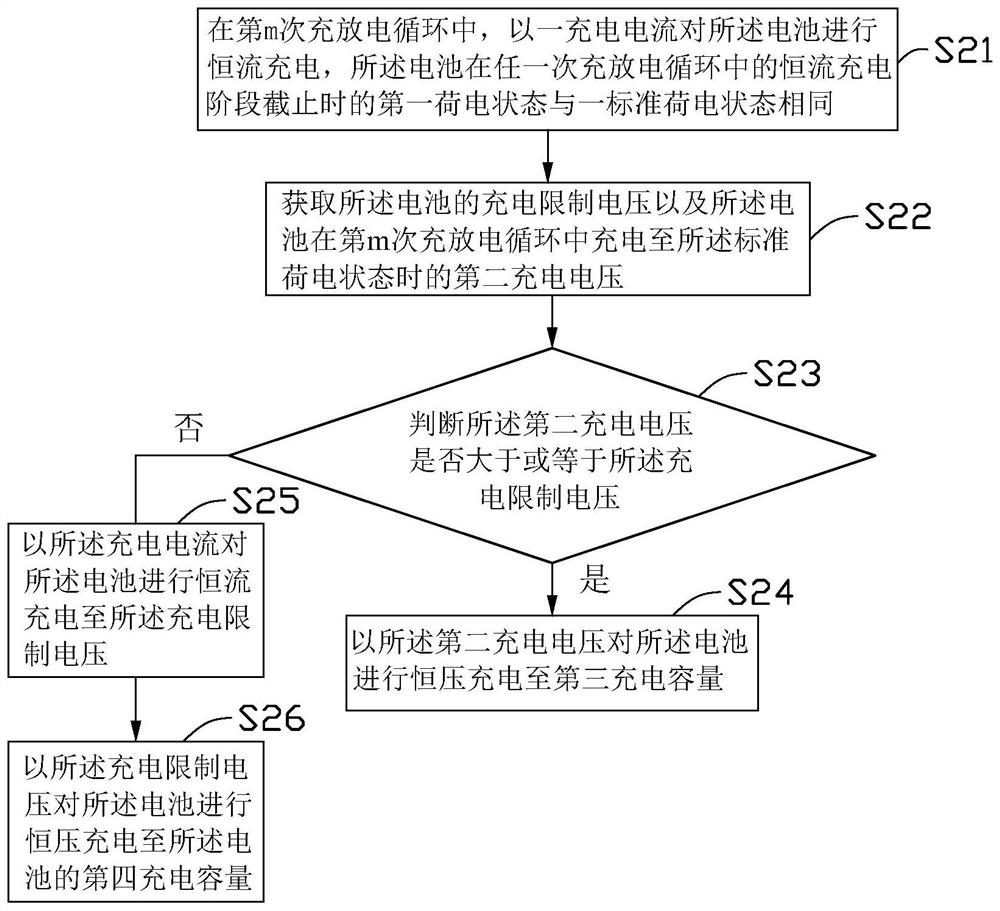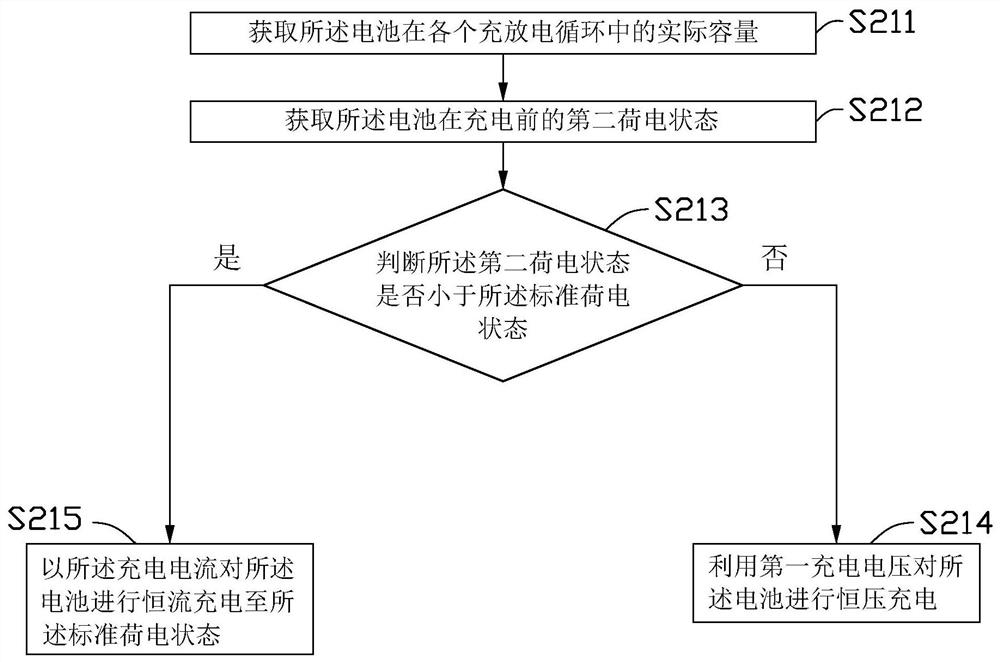Charging method, electronic device and storage medium
A charging method and charging voltage technology, applied in battery circuit devices, circuit devices, secondary battery charging/discharging, etc., can solve the problem of prolonging the time of constant voltage charging, shortening the time of constant current charging, and long total battery charging time, etc. question
- Summary
- Abstract
- Description
- Claims
- Application Information
AI Technical Summary
Problems solved by technology
Method used
Image
Examples
Embodiment 1
[0099] (1) SOC 0 The parameter acquisition process of
[0100] Ambient temperature: 25°C;
[0101] Select fresh battery to get parameter SOC 0 , the specific acquisition process is as follows;
[0102] Step 1. Use a constant current of 1.0C to discharge the battery until the voltage of the battery is 3.0V;
[0103] Step 2. Let the battery stand for 5 minutes;
[0104] Step 3: Use a constant current of 1.5C to charge the battery until the battery voltage reaches the cut-off voltage of 4.45V (which can be understood as the charging limit voltage);
[0105] Step 4. Continue to use a constant voltage of 4.45V to charge the battery until the battery current reaches the cut-off current of 0.05C;
[0106] Calculate the SOC at the end of constant current charging in step 3 to be 70.6%, and the SOC 0 The value is 70.6%.
[0107] (2) Charging process
[0108] Ambient temperature: 25°C;
[0109] Charging process:
[0110] Step 1: Obtain the actual capacity Q of the battery;
...
Embodiment 2
[0118] (1) SOC 0 The parameter acquisition process of
[0119] with the SOC of Example 1 0 The parameter acquisition process is the same, and the SOC at the end of constant current charging is 70.6%. The difference is that the SOC 0 The value is 71%.
[0120] (2) Charging process
[0121] Same as the charging process of Example 1, the difference is the SOC 1 = 71%.
Embodiment 3
[0129] It should be noted that Embodiment 3 discloses that a fresh battery is used to obtain corresponding charging parameters.
[0130] (1) SOC 0 The parameter acquisition process of
[0131] with the SOC of Example 1 0 The parameter acquisition process is the same, and the SOC at the end of constant current charging of the battery is 70.6%, and the SOC 0 The value is 70.6%.
[0132] (2) Charging process
[0133] The charging process is the same as in Example 1, except that a battery that has been cycled 100 times is used for charging.
PUM
 Login to View More
Login to View More Abstract
Description
Claims
Application Information
 Login to View More
Login to View More - R&D
- Intellectual Property
- Life Sciences
- Materials
- Tech Scout
- Unparalleled Data Quality
- Higher Quality Content
- 60% Fewer Hallucinations
Browse by: Latest US Patents, China's latest patents, Technical Efficacy Thesaurus, Application Domain, Technology Topic, Popular Technical Reports.
© 2025 PatSnap. All rights reserved.Legal|Privacy policy|Modern Slavery Act Transparency Statement|Sitemap|About US| Contact US: help@patsnap.com



